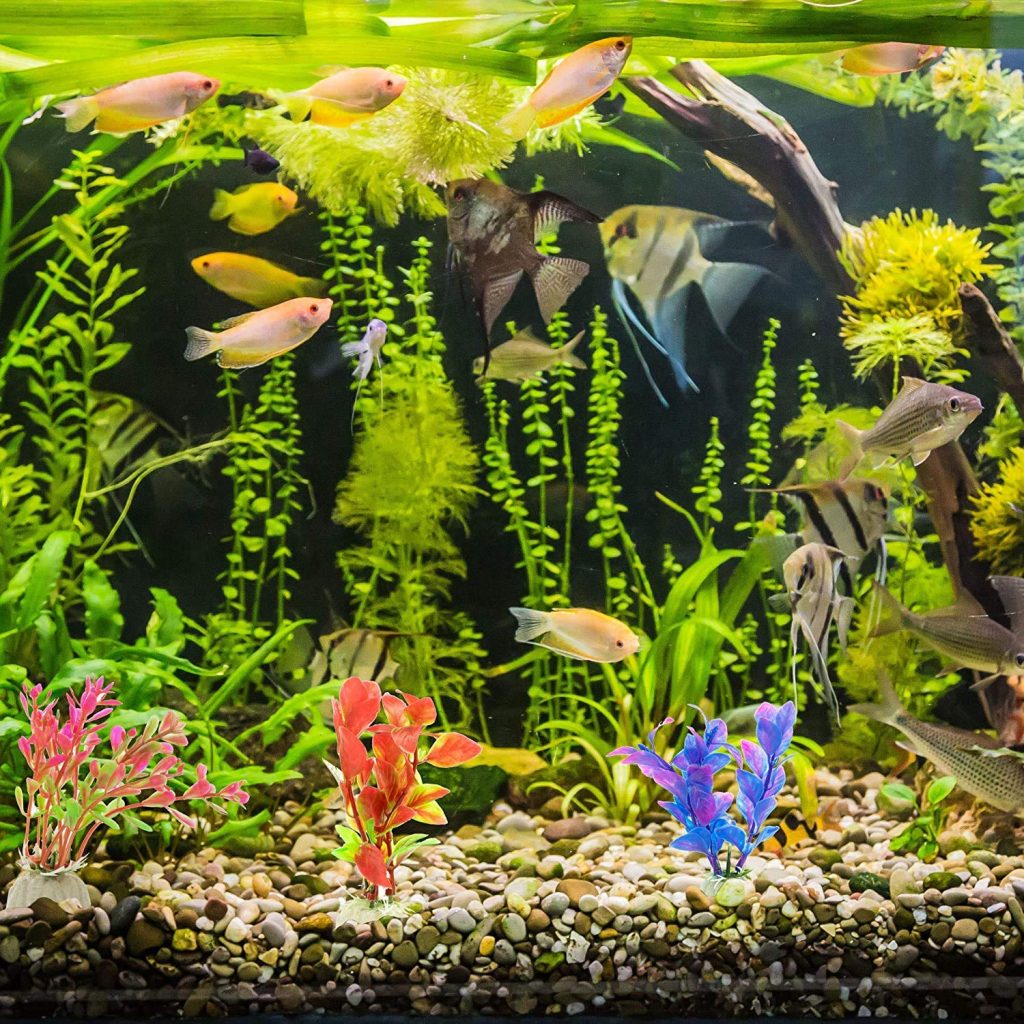An excellent aquascape is an amalgamation of talents. Professional aquascapers, such as Josh Sim of Malaysia and others, employ depth perspective, perspective, and the principles of rock arrangement to design their landscapes.
The layering of substrates gives stability and aids in supporting the growth of plants. Choose the substrate that best matches your personal preferences and needs for light.
Aquarium Layout Plans
The design of the aquascaping starts with the layout of the aquarium. Aquarists select a theme, and then place hardscapes, fish and plants according to the theme. The theme must be represented as well in the choice of substrate.
Every aquarist has their preferred method of designing the perfect tank. There are some guidelines that can be helpful. The best practice is to make the negative area of tanks (the portion that is not covered by plants or hardscape) be at least two-thirds of its surface. This creates an illusion of depth.
Contrast is a different concept. This can be achieved by altering the size, color and shape of the various elements of the tank. This creates a sense of depth and draws the attention of the viewers throughout the entire scene. Concentration points, such as big pieces of driftwood, or rocks with unique designs, are a great way to draw the attention of viewers and help anchor the aquarium. Aquarium owners who adhere to these basic guidelines can design an aquarium that takes viewers to a captivating underwater world.
Substrate
Substrate is the substance that is used to cover the bottom of the aquarium. It has the potential to influence the growth of plants and also aesthetics. There are many choices, from vibrantly colored gravel that can fit in with a castle or mermaid theme for aquariums for children as well as natural brown sand that blends in with driftwood and aquatic plants. It is essential to consider the size, color, and the reactivity of the substrate with water, and the impact it has on fish when selecting a substrate for your aquarium.
In general, it is recommended to select a substrate that is not too thick. A thick substrate could hinder the development of plants, block filters and make it difficult to wash. The color of your substrate is dependent on individual preference. Colors that are bright on the substrate will make fish that are lighter colored pop however they can cause fear in certain fish. Darker substrates can enhance the colors of fish and are ideal for fish with darker colors. It is also possible to create an “decreasing-in-size” arrangement by covering focal rocks as well as driftwood with larger pieces of material. You can then use smaller gravel for the remainder of the substrate.

Aquatic Plants
The aquatic plants do not just give an aquarium a natural look They also absorb ammonia and supply oxygen to fish as well as other aquatic invertebrates. A variety of fish species make use of them for spawning sites as well as a shelter. They also aid in reducing algae growth and help to stabilize the pH levels of the tank’s the water.
Find a trusted retailer which sells live plants to identify the most suitable aquatic plant. Avoid shops which sell non-aquatic plants in their aquarium department. They will not last and will likely end up dying after a short time.
The aquarist has the option of choosing from a wide range of aquatic plants, like carpeting, moss, or stem species. They are usually derived from tissue cultures, making them a great choice for those who are new to. Takashi Amano has made the riccia species, which is a dwarf hairgrass, a cult. These plants can be found in salwater or freshwater aquariums. They are also submerged or emersed, based on the preferences of the species.
Rock and Driftwood are placed
Aquascapes are not complete without the use of driftwood and stones. They create a natural setting and add depth be hai san cho nha hang aquarium. It is also possible to make use of these natural materials to make focal points that will draw attention to your aquarium. It is possible to create focal points using anything from a huge piece of driftwood, or a distinctive rock formations to shadowing.
Driftwood should be carefully placed in the aquascape to ensure that tannins don’t leach into the water of your aquarium. This could cause damage to the aquatic plants. Driftwood should also be appropriate in size for the tank. Larger pieces of driftwood stand out and increase the height of your tank and smaller pieces can be utilized to fill in gaps and add visually appealing.
Large pieces of wood could be used to create an edifice or a cliff in your aquascape. A smaller piece could be used to create an underwater cave. Utilizing color contrasts to make depth is also crucial. The combination of big and small rocks, and also a variety of shades, can make your waterscape appear more natural.
Aquarium Chemicals and Water Filtration
The maintenance of the water’s quality and balance of chemical is the last step in aquascaping. It requires regular water changes and trimming of plants, and a precise equilibrium of light CO2 and other nutrients. This is why you need to use various filter media, such as GFO, synthetic polymers, and carbon.
Layers are an excellent way to create perspective and depth in the aquarium. It is essential to incorporate an array of different plants, in both the background and the foreground. The viewer is then able to immerse himself in the surroundings of the aquarium.
This is accomplished by with the use of the rule of thirds that is easy and efficient. It involves constructing an imaginary grid consisting of two horizontal lines as well as two vertical ones across the entire surface of the aquarium, dividing it into equal parts. Through creating focal points at the intersections or in the line, you can eliminate symmetry and ensure that your aquarium appears lively and intriguing.
